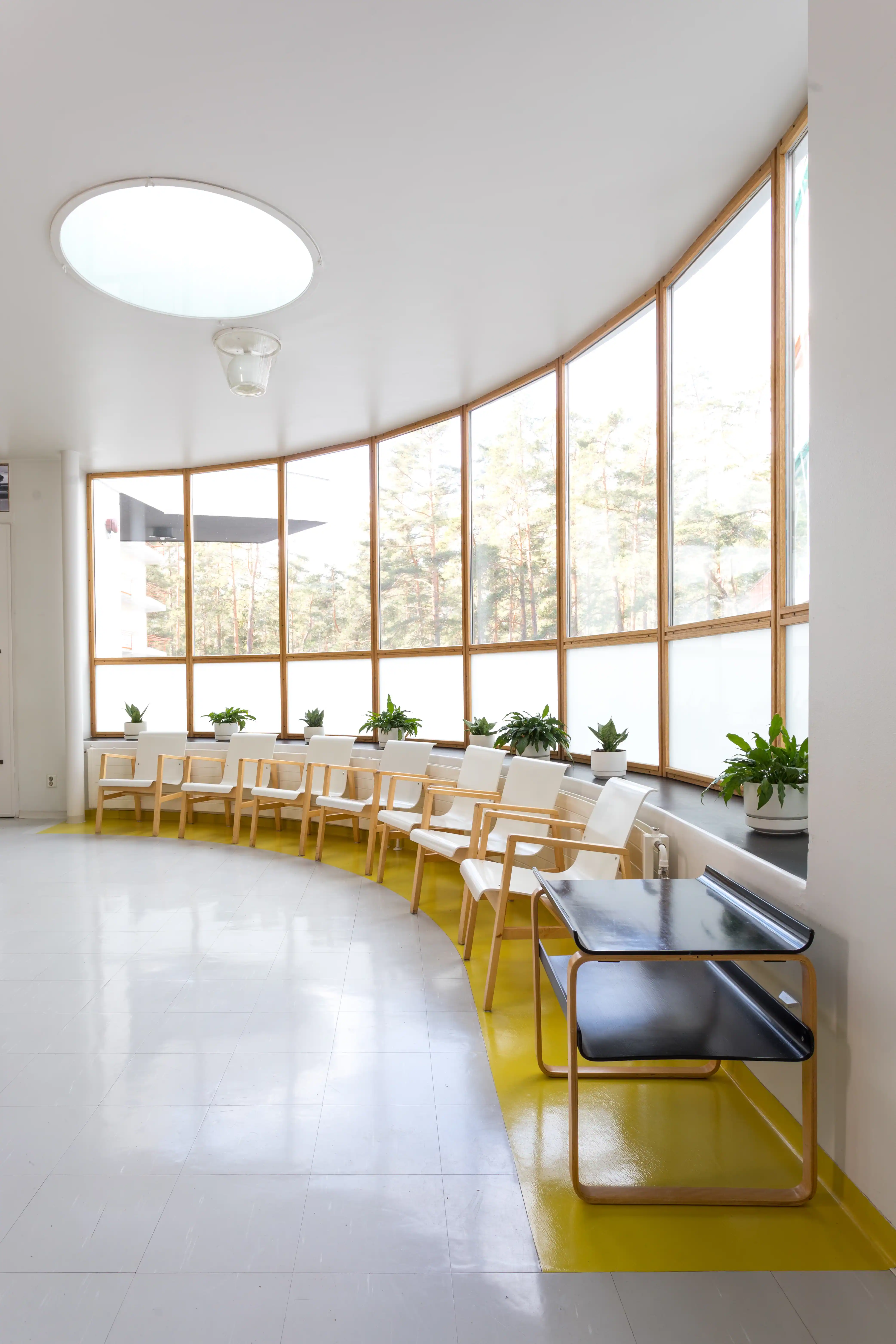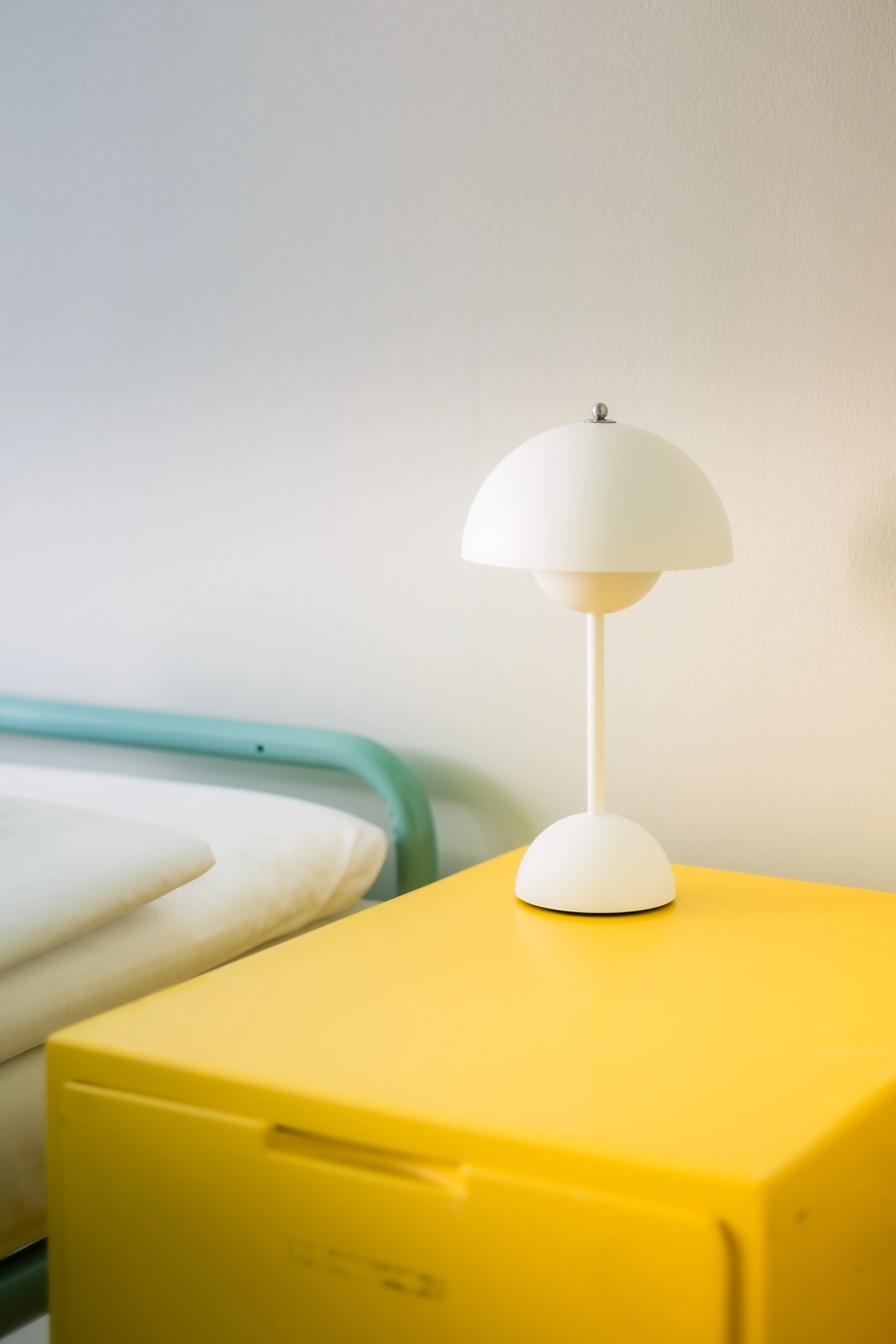Alvar and Aino Aalto’s Paimio Sanatorium Opens its Doors to Overnight Guests

Photo by Ola Kolehmainen, © Paimio Sanatorium Foundation

Photo by Mikko Ryhänen, © Paimio Sanatorium Foundation

Photo by Mikko Ryhänen, © Paimio Sanatorium Foundation

Photo by Ola Kolehmainen, © Paimio Sanatorium Foundation

Photo © Paimio Sanatorium Foundation





A unique new option is now available to design lovers who happen to find themselves seeking overnight accommodations in Western Finland: the former patient rooms of a 1933 sanatorium designed by Alvar and Aino Aalto.
The advent of the industrial metropolis in the 19th century brought with it great densities of population, and all those residents in close quarters facilitated the rapid proliferation of communicable diseases like tuberculosis. Sanatoriums, specialized hospitals often for respiratory ailments, served as great bulwarks against the tide of epidemics. With their expansive halls and abundant natural ventilation and lighting, patients and staff had room to breathe.

The Paimio Sanatorium in 1933. Photo © Gustaf Welin, Alvar Aalto Museum
Some of these palliative care facilities also served as architectural experiment grounds, like the Aaltos–designed Paimio Sanatorium, which commanded worldwide attention with its machine-like aesthetics. The complex, like other sanatoriums, was largely made redundant with the invention and widespread distribution of antibiotics in the 1950s, and the building slowly but surely hosted an ever revolving and shrinking set of hospital departments in the succeeding decades.
The Paimio Sanatorium Foundation was founded in 2020 by the Hospital District of Southwest Finland, the State of Finland, the Alvar Aalto Foundation, the Municipality of Paimio, and the City of Turku, as a caretaker for this significant work by the internationally renowned husband-wife Finnish architects. An objective of their stewardship is the development of new uses for the facility, and, to that end, the Foundation announced that several of the original patient rooms on the second floor are now available for overnight stays. This is not the first for hotel accommodations on the complex’s grounds—nearby a handful of staff dormitories, two of them designed by the Aaltos, are already available to the public as overnight lodgings.


Photos by Jaska Poikonen, © Paimio Sanatorium Foundation
The building is heralded as an early landmark of Modern architecture, and, for the Aaltos, was conceived as a “medical instrument” with ample cross ventilation and outdoor access for patients, such as numerous verandas with views of the surrounding pine forest. The emphasis on care is also found across the interior; sinks with angled basins reduced the echo of splashing water; nonporous floors and curved surfaces allowed for easy cleaning; and a soft color and lighting scheme throughout sought to calm patients. Custom-designed furniture is located within private and communal rooms, including the Paimio Chair, which, sculpted of bentwood, became one of the Aaltos’ most recognizable works. Hotel guests will be able to experience those design features firsthand, within the carefully restored and updated rooms, albeit with new high-quality bedding and mattresses produced by local manufacturers.



Photos by Turkka Taipale, © Paimio Sanatorium Foundation
In addition to the renovated accommodations, the Paimio Sanatorium Foundation offers several programs in the summer like artist residences, guided architecture tours, contemporary art exhibitions, and cultural events.


.jpg?height=200&t=1695929142&width=200)





